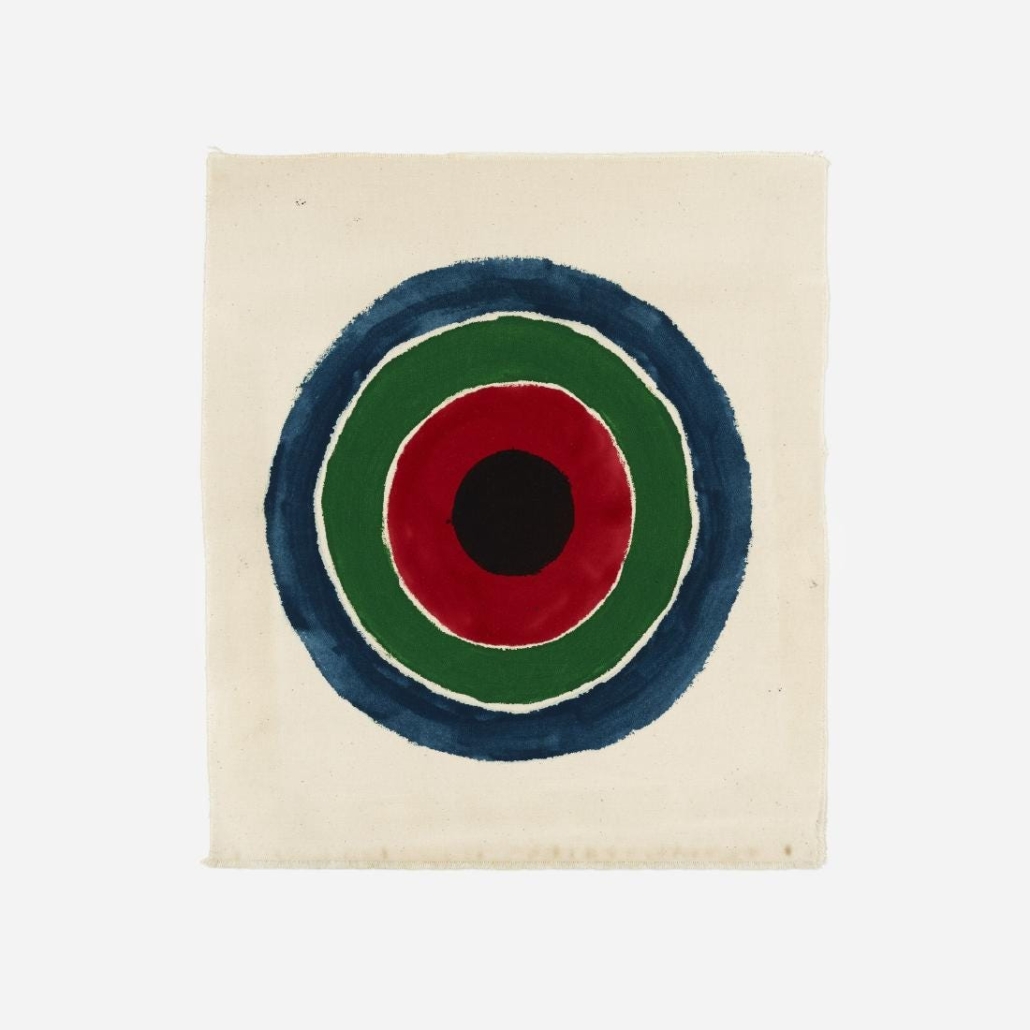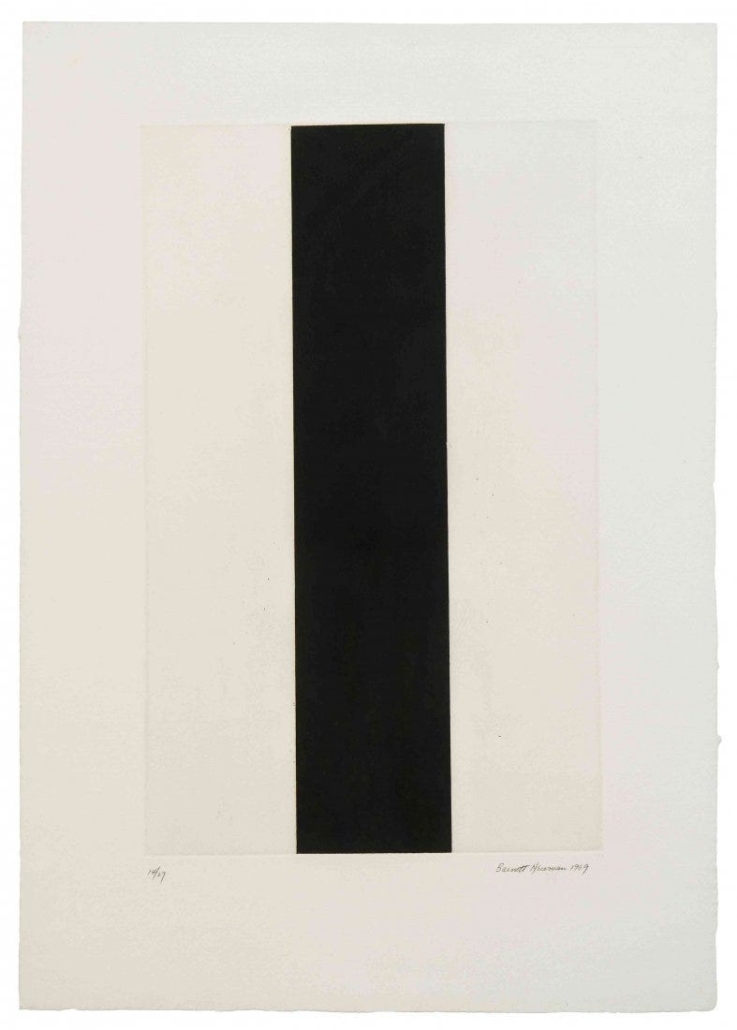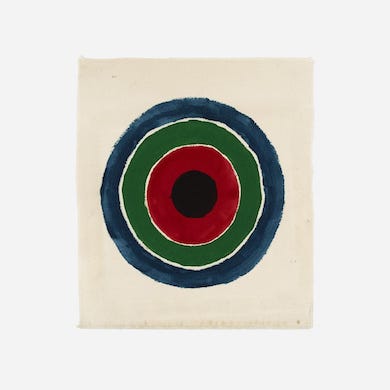
NEW YORK — Among the most distinctive styles of abstract painting to emerge from New York in the 1940s-1960s was the one dubbed “Color Field.” Its look is definitely rooted in the European modernists but it’s overwhelmingly New World flavored. Wide swaths of color fields — some have firmly defined and geometric borders while others are more amorphous — define the canvas. Brushstrokes are far less important than the overall process, and the mastery of color seeks to engage the viewer in a visceral manner. A handful of artists led the charge and their work continues to attract collectors while influencing the art world and up-and-coming artists. Among those who have been labeled Color Field painters are Mark Rothko, Barnett Newman, Sam Gilliam, Clyfford Still, Helen Frankenthaler, Morris Louis and Kenneth Noland.
Rothko (Russian-American, 1903-70) is perhaps the best known of the Color Field painters and is famous for his abstracted paintings featuring rectangular blocks of pure color that defined his work in his mature period from the 1950s forward. His painting No. 9, rendered in 1947, is widely considered to be a breakthrough work that hints at what is to come, but has none of the geometric forms he is well known for. Instead, Rothko paints bold biomorphic forms showing his command of color, pairing a vivid orange ground against bright yellow and red. Reportedly, this is the first work he made using this color combination.

Quinn’s Auction Galleries has been instrumental in bringing the paintings of lyrical abstractionist Sam Gilliam (American, b. 1933-) to the marketplace, and Mathew Quinn described the 87-year-old artist as a trailblazer. Apparently, he is a bit of a late bloomer. Interest in the artist’s work has always been high in certain areas, but Quinn explained that most of Gilliam’s auction records were set after the artist turned 80. Museums have also taken notice. The Smithsonian’s Hirshhorn Museum and Sculpture Garden will present Gilliam’s first American museum retrospective in more than 15 years, slated to open in spring 2022. “This groundbreaking exhibition will encompass Gilliam’s six-decade-long practice, from his early explorations of the ideas of the Washington Color School and his now-iconic ‘Drape’ compositions to key examples of his most recent work,” according to the museum. The artist is renowned for marrying painting techniques with sculptural and architectural practices to create a medium that transcends painting.

Also described as a late bloomer, Barnett Newman (American, 1905-1970) started painting when he was about 30; he worked in fashion retail, teaching and writing before that. “He deemed much of his early work unworthy of consideration and destroyed it … it was not until 1944 that he considered his work mature,” according to the Museum of Modern Art in New York. In 1948, he developed his signature style that made all his future paintings instantly recognizable — a band, or series of bands, running vertically through fields of color in his paintings that he called a “zip.” The minimalist nature and sparse compositions led people to group him in with the Color Field painters. Describing the practice of painting, Newman famously said, “A painter is a choreographer of space,” and his zips perfectly define the space of his canvases with bands of minimalist black or vibrant hues.

Helen Frankenthaler (American, 1928-2011) was a leading member of the Color Field painters and in her career, which spanned six decades, she came up with her own “soak-stain” technique to stain canvases with large areas of color. She would pour thinned paint on her canvases, giving them a unique look that created flowing blocks of color that were both misty yet vibrant. Her work heavily influenced her fellow Color Field painters Morris Louis and Kenneth Noland. Her 1991 artwork Leprechaun seems to show evidence of some brushwork but the orange swath at right was clearly in keeping with her signature motif of poured paint.

Noland (American, 1924–2010) played with several geometric shapes, but his experimentation with circular shapes, especially concentric circles nestled within one another, was a long-standing motif. In a nod to both Jackson Pollock and Frankenthaler’s work, Noland’s creative process reportedly had him putting his canvases on the floor and drawing the circles’ outer edges with a pencil before pouring thinned paint onto it. The latter technique allowed the paint to bleed into the canvas’ woven texture instead of sitting on top of it. While most closely resembling a bullseye, works such as his 1963 untitled painting can evoke other associations from the viewer, such as a large eyeball or a globe.
The joy of standing in front of Color Field works such as these is the interpretation is left up to the viewer. While some are clearly designed to impart a certain emotion, such as joy, or to convey spirituality, these paintings are truly timeless. While they perfectly evinced the aesthetic of the Mod era, particularly the 1950s-1970s, they still look great on the wall today.
# # #


